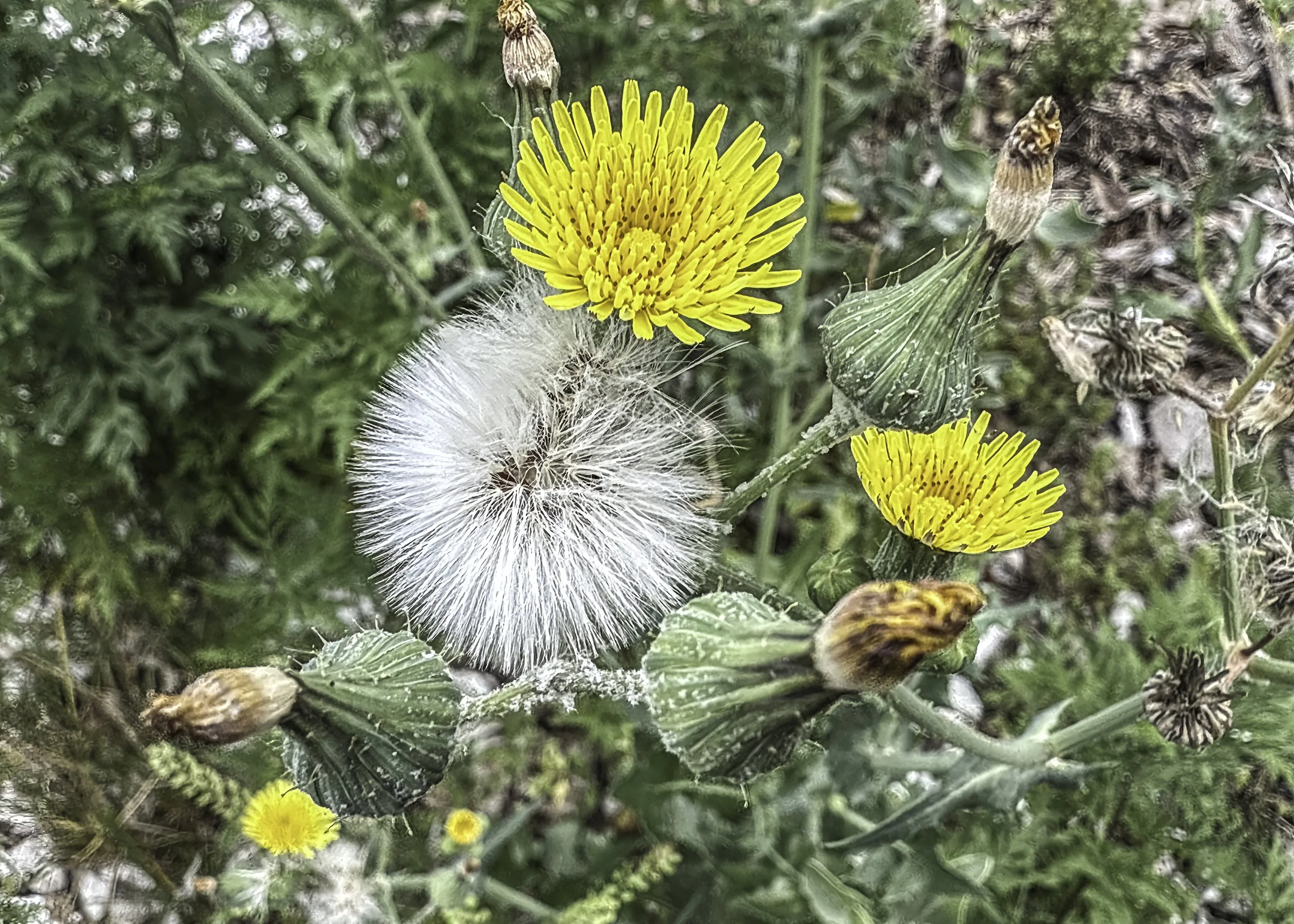Turtle Mound Flora
Panoramic photo taken with Apple iPhone 16 Pro Max 1/2703 sec, f/1.78, ISO 80
Turtle Mound at Canaveral National Seashore is a significant archaeological site that showcases the rich history of Florida's Native American cultures, particularly the Timucua. Standing about 30 feet high, this large shell mound is composed of ocean shells and provides insight into the dietary practices and settlement patterns of ancient peoples who inhabited the region. The mound is surrounded by a diverse coastal ecosystem, including pristine beaches, salt marshes, and upland habitats, making it a vital area for both flora and fauna. The riverside beaches, relatively high topography of the ancient midden, and lagoon make for diverse habitats supporting a nice variety of flora and fauna. Today, we explored both biological kingdoms, but for today’s blog, I’m just going to look at a few examples of the plant life found on and around the mound.
Oceanblue Morning Glory
This beautiful flower is known by several names, but since it is so close to the ocean, we’ll stick with the name most commonly used in these parts…Oceanblue. The flowers produced by this plant are “hermaphroditic” meaning these plants possess both male and female reproductive organs within the same individual. This enables them to produce both pollen and ovules. This unique feature allows for greater flexibility and adaptability in reproduction, as these plants can self-pollinate or cross-pollinate with others in their vicinity. The morning glory is a fast growing aggressive vine and can grow to more than 70 feet in tropical climates. Technically, the plant is a “native” species, but it can become a nuisance plant as it spreads rapidly. Nonetheless, it is a beauty to behold here on the mound.
Sea Ox-eye
This lovely flower is a member of the aster family and is native to the United States and Mexico. It extends north to Maryland and south from here in Florida to Texas. This plant occurs naturally in coastal strands, mangroves, beach dunes, salt marshes and tidal flats. It is very attractive to butterflies and other pollinators as it can bloom year-round. Its seeds provide food for birds and other small wildlife.
Prickly sow-thistle
Another member of the daisy family, the Prickly sow-thistle (Sonchus asper) is a biennial herbaceous plant often found in disturbed areas across North America. We found this plant today growing in sandy soil that had been overlain with bags of oyster shells in an attempt to limit erosion along the banks of the Indian River during stormy periods. Characterized by its lobed, spiny leaves and bright yellow flowers, it can grow up to 4 feet tall. The plant's milky sap is a distinguishing feature, and its seeds are equipped with fluffy tufts that facilitate wind dispersal. These tufts are easily seen in this photo with both the flowers and the fruits visible. Native pollinators are attracted to its flowers, making it a contributor to local ecosystems.
Make it stand out
Nickernut
Finally, but certainly not least, is a fascinating plant called the Nickernut. Nickernut, scientifically known as Guizotia abyssinica, is a flowering plant native to East Africa and parts of India. It belongs to the Asteraceae family and is cultivated for its oil-rich seeds, which are commonly used in cooking and traditional medicine. The plants thrive in well-drained soil and are often grown in regions with a moderate climate. The seeds are buoyant and durable which allows them to be carried by ocean currents over vast distances and commonly end up in new coastal areas. When the pods seen in the photo taken today at the mound eventually open, the hard beadlike seed may well fall into the Indian River and begin a new journey to the next spot for colonization!
Tech Tip - All of the shots of flowers seen above were taken using an Apple iPhone 16 Pro Max with an app called “Macro Mode”. The app allows you to adjust focus and exposure by moving a slider. In conditions where lighting is limited by dark forest conditions for example, you can control the light from the phone’s flashlight to get just the right amount of lighting you desire. The app always chooses the best lens to use for your macro work as well. I feel this app is a “steal” for the price of $3.99. While not the same quality you’ll get when shooting a mirrorless camera with a high end Macro lens (which cost around $900!), you get a lot of bang for the buck in this little app and as an added bonus, you’ll usually have it with you. Nice.




